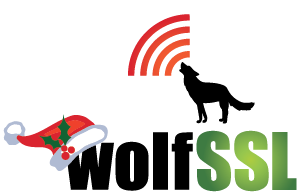Ensuring the security of cryptographic modules is paramount world-wide, particularly in governments and regulated industries. The Cryptographic Algorithm Validation Program (CAVP) and the Cryptographic Module Validation Program (CMVP) serve as cornerstones in this endeavor. The CAVP particularly focuses on validating individual cryptographic algorithms against the Federal Information Processing Standard or FIPS for short. The CAVP […]
Read MoreMore TagCategory: Uncategorized
Join Our Live Webinar: Advanced curl: Learn From the Founder, Daniel Stenberg
We’re thrilled to announce that Daniel Stenberg, the founder and lead developer of cURL and libcurl, will be hosting an exciting webinar. Join us for “Advanced curl.” This webinar is a must-attend for anyone eager to enhance their curl skills and explore its full potential. Check it out here: Advanced curl: Learn From the Founder, […]
Read MoreMore TagWhat’s the Difference Between Type 1 and CSfC?
NSA’s Type 1 encryption has long been the gold standard for protecting classified data. However Type 1 Encryptors can be impractical due to their stringent design requirements and long road to market. The CSfC program offers a more flexible alternative by integrating commercial-off-the-shelf solutions into a multi-layered solution providing redundancy, reducing likelihood of failure on […]
Read MoreMore TagFIPS vs FedRAMP Compliance and Requirements
The wolfSSL team has noticed an uptick in questions about FedRAMP requirements. Today, we want to cover the differences between FIPS and FedRAMP. FIPS: The Federal Information Processing Standards (FIPS) stipulate security requirements for cryptographic modules, which wolfSSL Inc. meets with our wolfCrypt FIPS module. NIST and the CMVP then encourage all federal programs using […]
Read MoreMore TagWhat is the difference between JNI, JCE and JSSE?
What are the JNI, the JCE, and the JSSE, and how does wolfSSL fit into this? To answer the first question: The Java Native Interface (JNI) is a programming interface that allows Java to natively call code written in other languages (C, C++, etc). For example, the JNI allows a Java application to natively call […]
Read MoreMore TagwolfSSL Inc. announces wolfHSM for Automotive HSMs (Hardware Security Modules)
A framework that makes it easy to integrate Automotive HSMs. Quantum-resistant cryptography now available for Automotive HSMs EDMONDS, Wash., June 5, 2024 /PRNewswire-PRWeb/ — wolfSSL INC. (Headquarters: Edmonds, Washington, USA), a vendor specialized in cryptography and network security, announces its new product wolfHSM. Automotive HSMs (Hardware Security Modules) dramatically improve the security of cryptographic keys […]
Read MoreMore TagWhat’s the difference between TPM 2.0, PKCS#11 and PSA?
In a well-designed modular system there is a dedicated component that performs cryptographic operations. It can be a discrete physical chip, a software library or a mix. Whenever a system component needs a cryptographic operation like hashing, signature verification, encryption, key creation, etc. it delegates the operation to the “cryptographic provider”. But how to interact […]
Read MoreMore TagwolfTPM: support for pre-provisioned device identity key and certificate
wolfTPM v3.2.0 is here, and among the new features is support for pre-provisioned device identity keys and certificates for the ST33, following the specification of the Trusted Computing Group’s TPM 2.0 Keys for Device Identity and Attestation. This feature allows you to read pre-provisioned certificates and keys that are tied to the device’s identity, which […]
Read MoreMore TagJoin Our Live Webinar: wolfEngine vs. wolfProvider: Discover Solutions for OpenSSL Compatibility
Watch our webinar, “wolfEngine vs. wolfProvider: Discover Solutions for OpenSSL Compatibility” today. This webinar is presented by wolfSSL Senior Software Developer Anthony Hu. Check it out here: wolfEngine vs. wolfProvider: Discover Solutions for OpenSSL Compatibility Anthony will delve into the differences between wolfEngine and wolfProvider and guide you on which product is suitable for your […]
Read MoreMore TagwolfSSL on the Espressif ESP8266 – Better than ever!
It may not be as glamorous as the new ESP32 RISC-V chipsets with all the various hardware acceleration capabilities, but the ESP8266 is a well established device which has a large codebase available with an even larger user community. Due to high customer demand, we’ve enhanced the wolfSSL libraries for the ESP8266. The recent changes […]
Read MoreMore Tag
